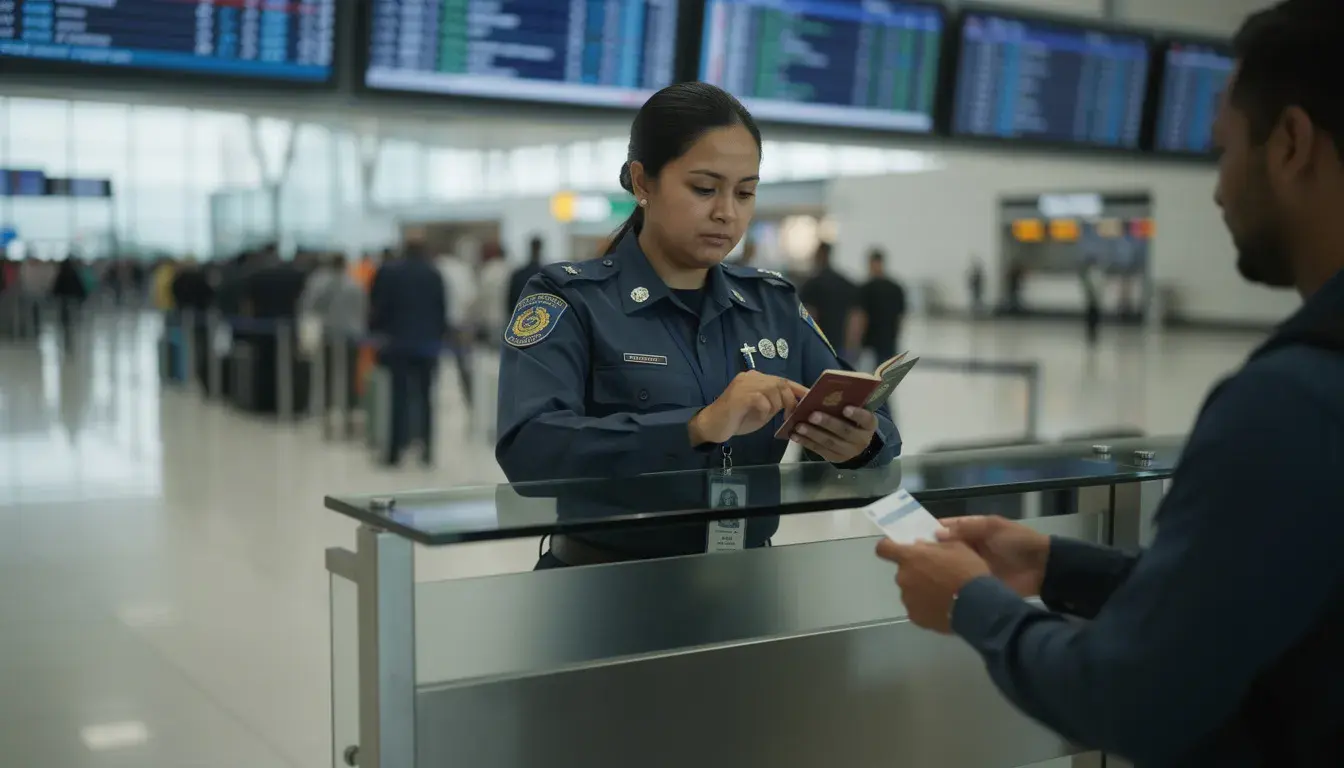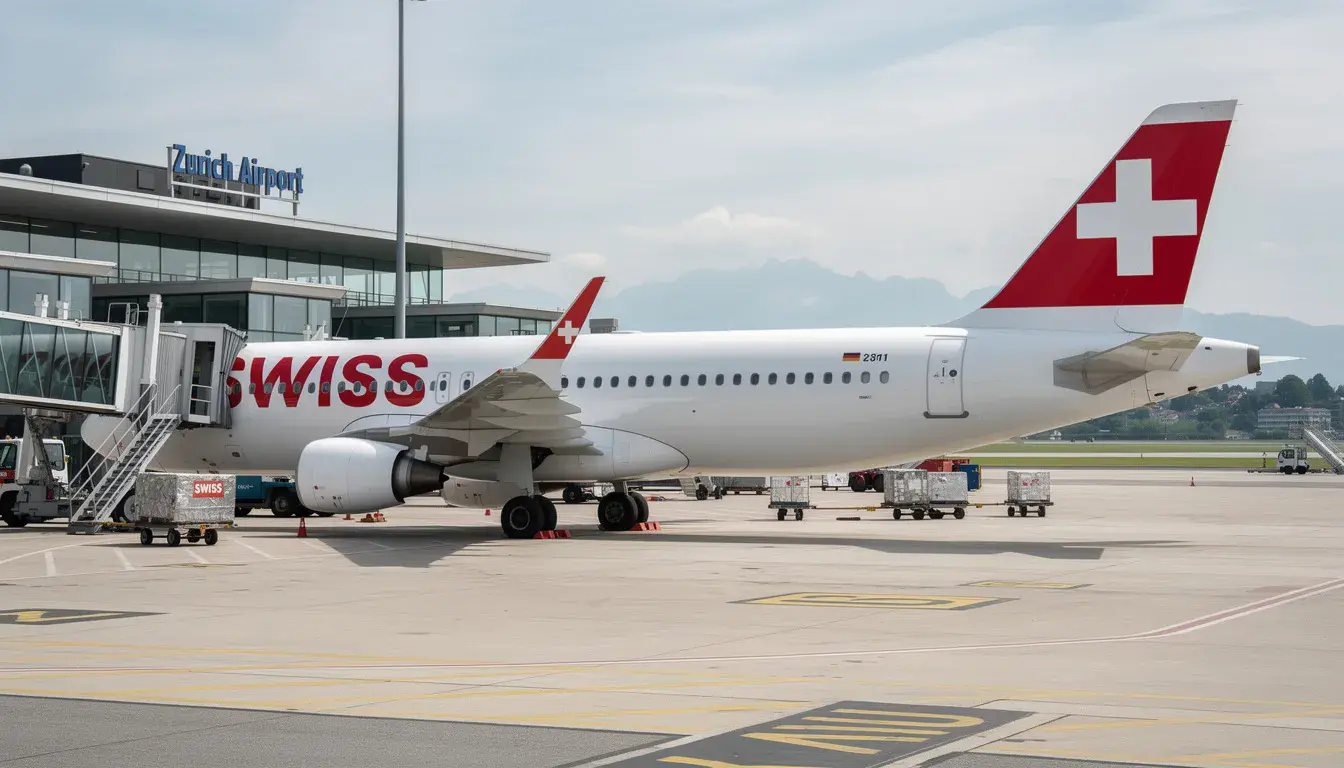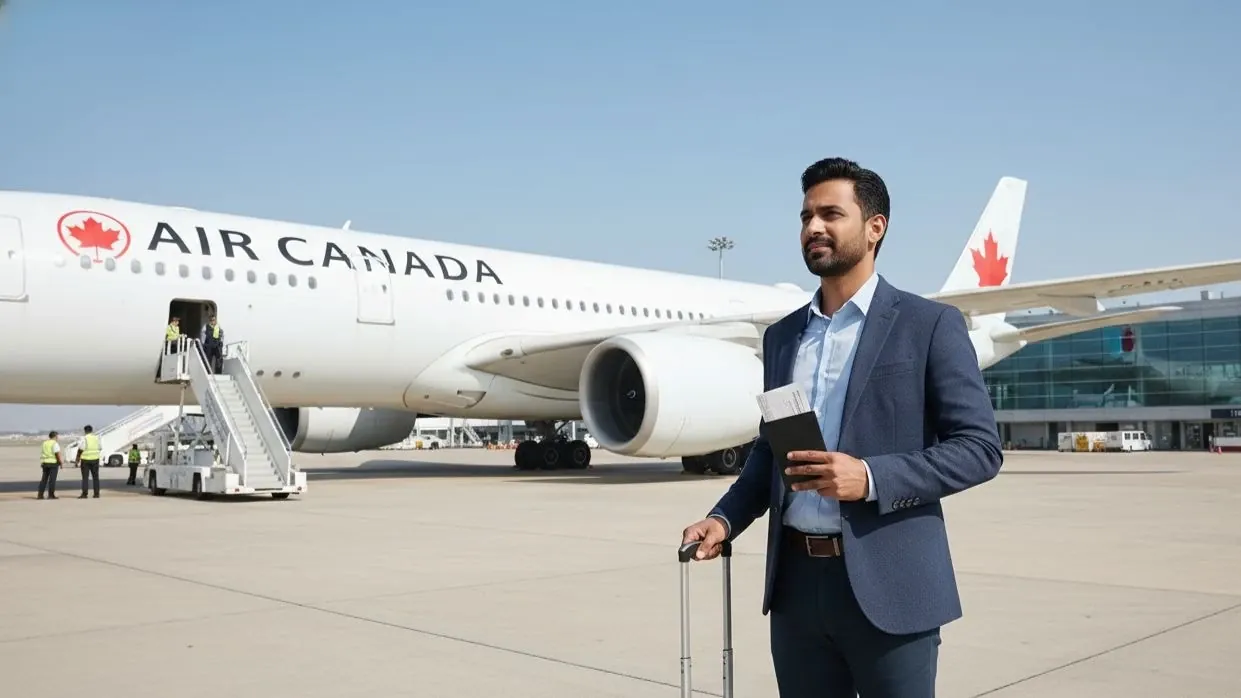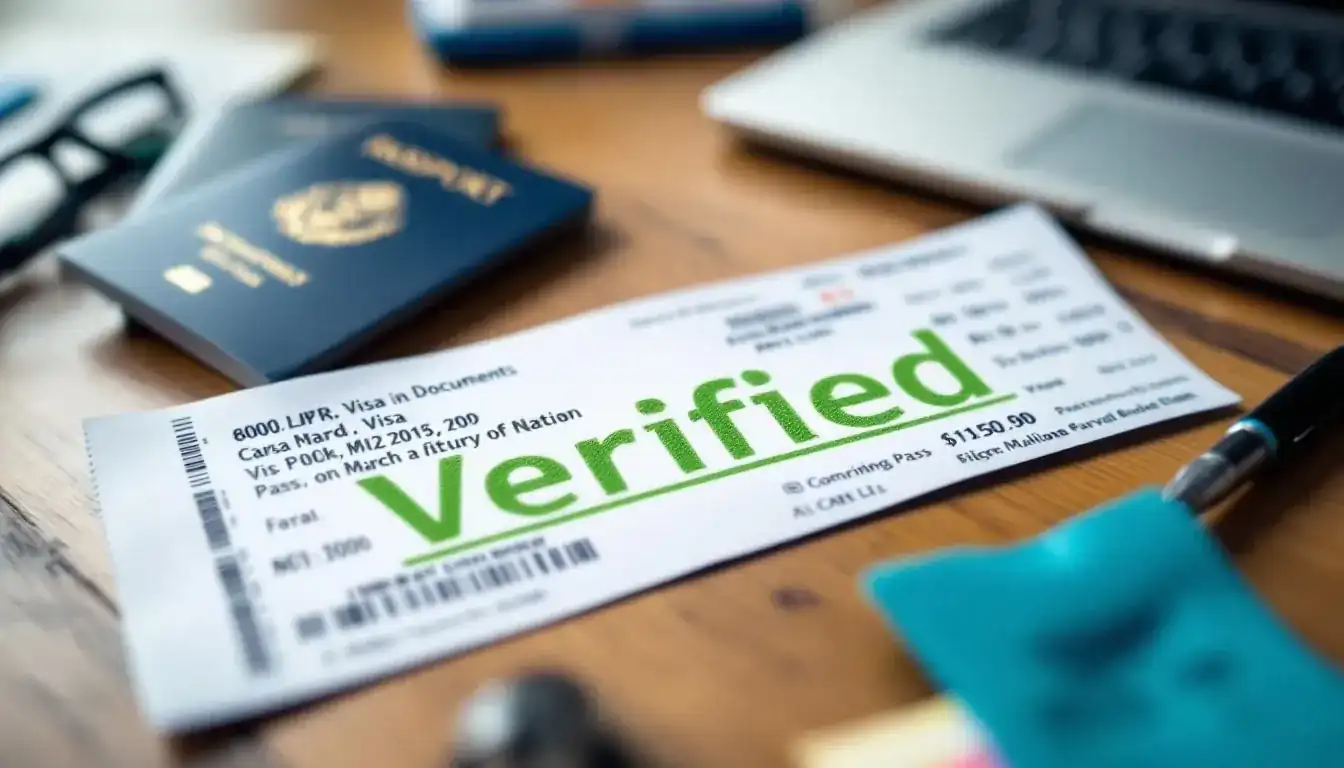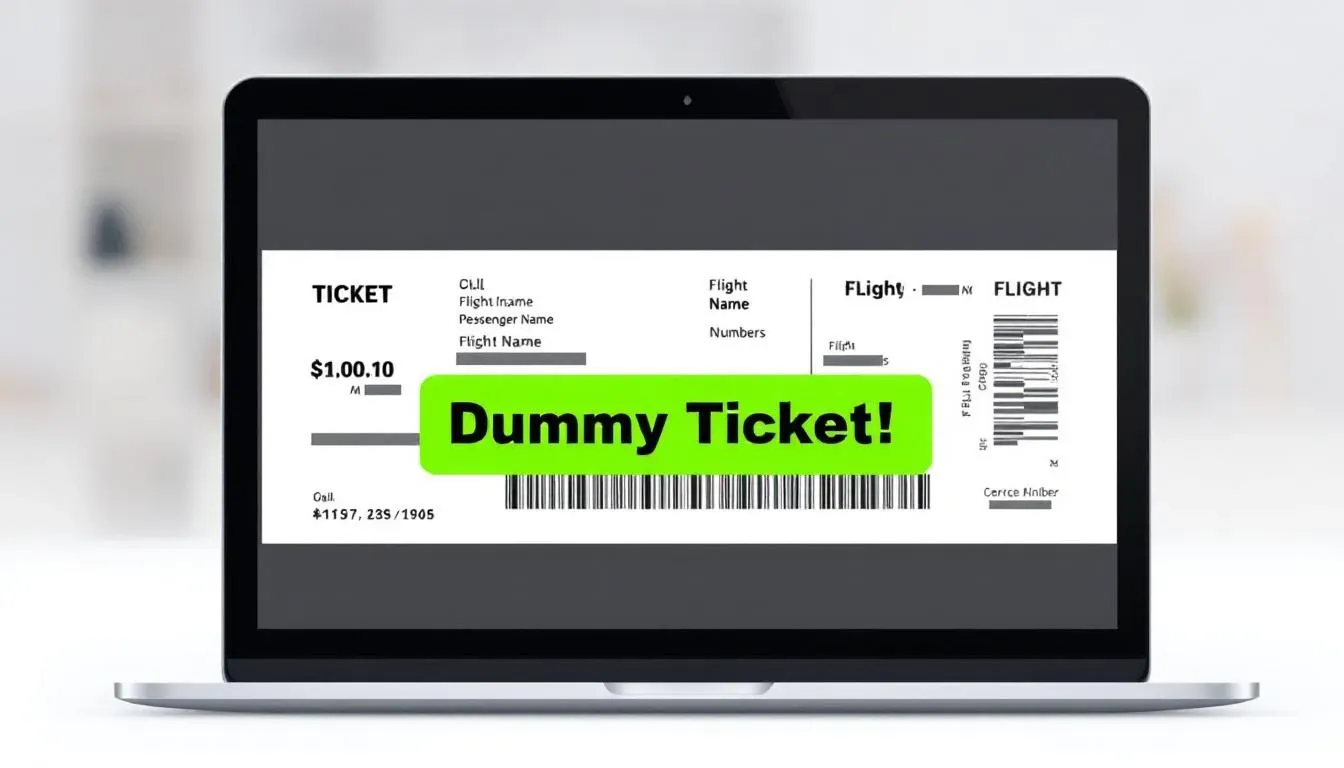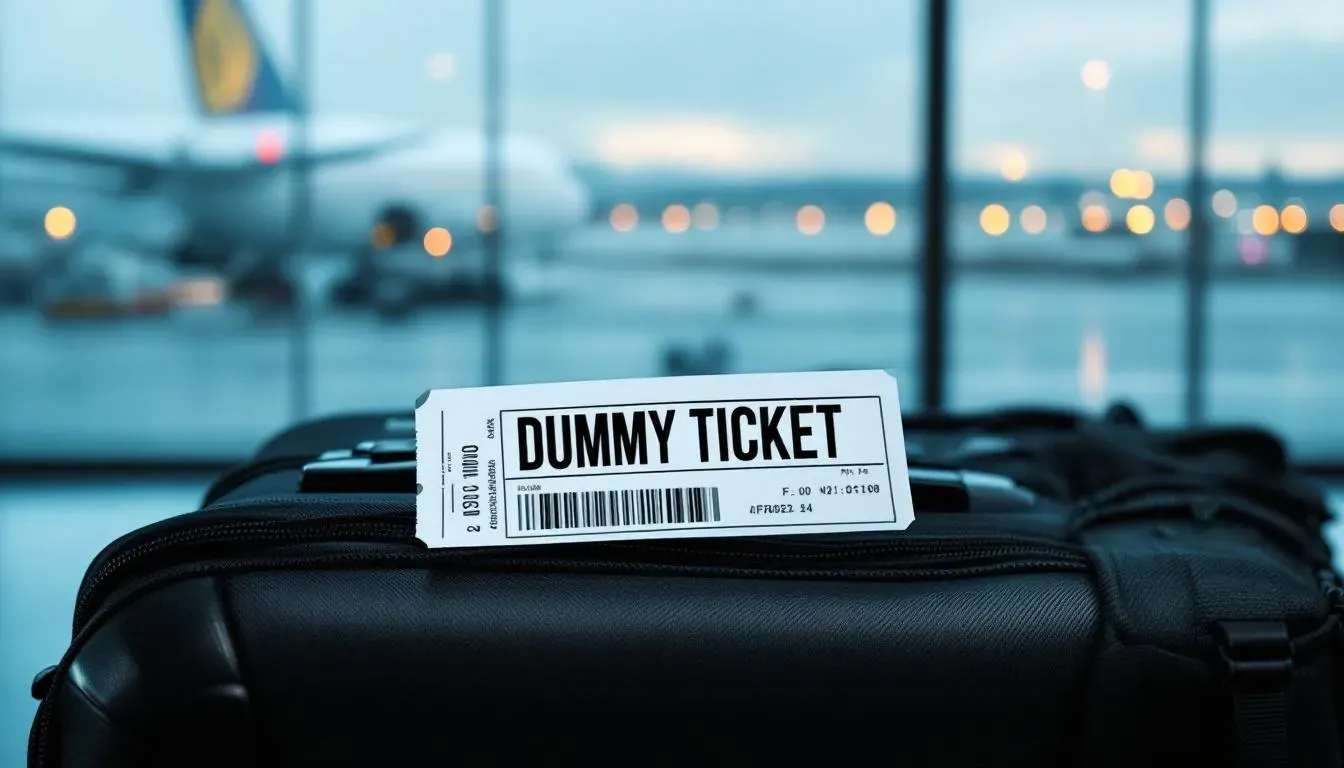Do You Need a Flight Ticket for Japan Digital Nomad Visa? The Real Checklist
Japan’s new Digital Nomad Visa is built for remote professionals who want a longer, smarter stay without pausing work. You get room to live, earn, and explore, but the paperwork needs clean timing. That starts with your flights. For Indian applicants, proof of onward or return travel often decides whether your file moves fast or stalls. A reliable dummy ticket can provide that verifiable proof without commitment, ensuring your application aligns perfectly. For more on visa processes and common pitfalls, check our FAQ.
We’ll show you how to match flight dates to visa validity, permitted stay, and multiple entry rules. You’ll see what works for students on tight budgets, first-time applicants juggling documents, families planning school calendars, and seasoned freelancers on sprints. We’ll keep it practical. When to book. What formats do officers accept? Explore our blogs for in-depth stories from successful applicants who've navigated similar challenges.
flight ticket for Japan digital nomad visa is one of the most useful documents travelers prepare when organizing international trips. While most countries do not ask you to buy a fully paid ticket upfront, they do expect a verifiable proof of travel intent that clearly shows your entry and exit plan. This helps demonstrate that you will follow your schedule and return on time.
Using a professionally issued and verifiable flight ticket for Japan digital nomad visa is the safest and most convenient way to satisfy this requirement without financial risk, especially for visa applications and immigration preparations.
Last updated: November 2025 — verified against the latest traveler documentation practices and global consular guidelines.
Table of Contents
How to align tickets with insurance and accommodation. Read on, and set up a plan that gets you cleared to land in Japan without drama. Secure your visa file today with fast, verifiable dummy ticket booking and fly with confidence. Learn about our team's expertise on our About Us page.
Who Can Actually Use Japan’s Digital Nomad Visa? The Ground Rules
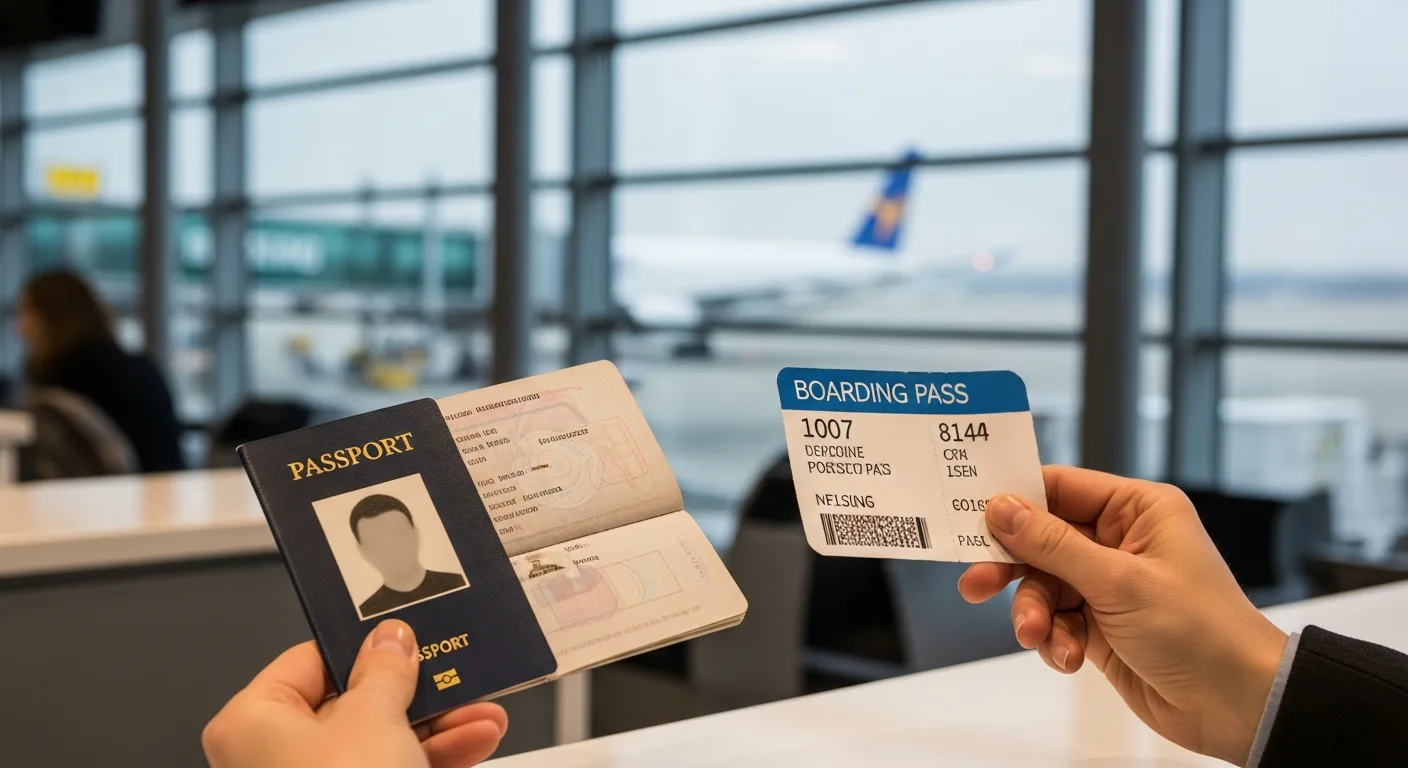
Before you plan flights or fix dates, lock down whether you qualify. Japan’s Digital Nomad pathway sits under “Designated Activities,” with clear limits on who can apply, how long you can stay, and what proof you must show. Treat this section as your go/no-go filter so the rest of your planning lands cleanly. If your appointment has moved, simply book a dummy ticket to match your new dates in minutes.
Built For Remote Work, Not Local Jobs
This status lets you live in Japan while working remotely for clients or an employer outside Japan. It is not a permit to take Japanese payroll jobs or sell locally. The stay is capped at six months, and no extension is granted, so you plan your entry and exit around that window. This rule ensures that digital nomads contribute to the economy without competing in the local job market, fostering a balanced influx of global talent.
Nationality And Income: The Two Hard Gates
Japan set two hard criteria that sit above everything else:
-
You must be a national of a country that is both visa-exempt for short stays in Japan and covered by a tax treaty with Japan.
-
You must show a minimum annual income of JPY 10 million at the time of application.
These come directly from the Immigration Services Agency’s guidance and the linked visa-exempt framework. For authoritative details on international travel standards, refer to the International Air Transport Association (IATA).
What This Means For Indian Passport Holders
Our readers in India often ask if they can apply on an Indian passport. As of now, India is not on Japan’s visa-exempt list for ordinary passports. That means the Digital Nomad status, which requires visa-exempt nationality plus a tax treaty, is out of reach for Indian passport holders unless you also hold a second passport that meets both tests. Always verify your passport’s status against Japan’s official visa-exempt table before spending on documents or tickets.
If you do hold an eligible second nationality (for example, from the EU, the UK, or other listed countries), you can apply on that passport, provided you also meet the income and insurance rules in the next subsections. Dual nationals should prioritize the qualifying passport to streamline the process and avoid dual-submission complications.
Who Counts As A Digital Nomad In Practice
Japan’s definition is activity-based: people doing international remote work, such as employees paid by a foreign entity, freelancers with overseas clients, or owners running a business registered abroad. Your remuneration must come from outside Japan; you cannot receive pay from a Japanese company while on this status. Keep contracts, invoices, or employment letters ready to prove this. In practice, this includes software developers coding for U.S. firms, marketers consulting for European brands, or consultants advising Asian clients from afar—any role where the value chain stays global.
Family Members You Can Bring And The Proofs You’ll Need
Spouses and dependent children can accompany you under a companion category tied to your Digital Nomad status. Everyone needs private medical insurance that meets Japan’s minimum coverage, and relationship proofs (marriage certificate, birth certificates) should be aligned with passports and translations where required. For insurance, plan for at least JPY 10 million medical coverage per person during the entire stay.
For families departing from India, build a simple sequence: first confirm the principal applicant’s eligibility on the qualifying passport and income, then add dependents with matching insurance dates and proposed travel dates. This avoids mismatches at the window. Consider family-specific challenges like school enrollments or spousal work permissions, ensuring all documents reflect a cohesive family unit narrative.
How Long You Can Stay, Entry Validity, And Re-Entry Nuances
Two clocks matter:
-
Visa validity for entry: Typically three months from the date of issue, usually single-entry. You must land within this window.
-
Period of stay after landing: Up to six months, with no extension.
These two are separate. You plan the appointment and your flight so that you can enter within the visa’s validity and still enjoy your full six-month stay. If you exit and try to re-enter, the single-entry rule can block you, so avoid unnecessary exits unless you’ve confirmed your permission and itinerary.
Some unofficial guides note cooling-off expectations before you can apply again. Treat the official line as your anchor and confirm re-application timing with the consulate handling your case, since policy notes can shift. For nomads planning multi-country hops, this single-entry limit underscores the importance of a focused Japan stay without mid-term departures.
The Money Proof: Hitting JPY 10 Million Cleanly
You need to evidence at least JPY 10 million in annual income, pre-tax. Use documents that Indian residents commonly have on hand for foreign payroll or freelance work:
-
Employer letter and recent payslips if employed abroad
-
Contracts, invoices, and inward remittance proofs if freelancing for overseas clients
-
Bank statements showing consistent receipts
-
Recent tax returns from your country of tax residence
The government wording focuses on income at the time of application. Avoid edge cases where exchange rates or variable invoices pull you just under the threshold. For freelancers, aggregating multiple client contracts over the past year can strengthen your case, especially if seasonal fluctuations are evident—include a brief explanatory note to contextualize variability.
Insurance And The Practical Minimums
Private medical insurance is mandatory for all applicants, including dependents. Japan’s published guidance specifies coverage for injury and illness at JPY 10 million or more. Buy policies that name each traveler, list Japan as the territory, and show start and end dates that fully cover your planned stay. Officers look for clean alignment across visa, insurance, and travel dates.
Popular providers for nomads include World Nomads or SafetyWing, which offer flexible Japan-specific add-ons. Always double-check for exclusions on adventure activities if your stay involves hiking in the Alps or surfing in Okinawa, as these could void claims and raise red flags during review.
The Compliance “Story” Officers Expect To See
Successful files are consistent. Make your packet tell the same story across every page:
-
Remote income from outside Japan, documented clearly
-
A qualifying passport that is on the visa-exempt list
-
Insurance that covers the whole stay at the specified limits
-
Realistic travel timing that respects the visa’s entry validity and six-month stay
-
Accommodation arrangements that match your dates
This coherence reduces follow-ups and protects your plans later at the airline check-in and immigration.
If you hold only an Indian passport, this specific route isn’t open today because the visa requires a visa-exempt nationality. If you have a second eligible passport, meet the income and insurance rules, and plan around a single entry and a six-month cap, you’re in range. Your next step is to map dates and documents so your entry happens within the visa validity and your stay lands cleanly within six months. Dual nationals often find this process smoother by applying from their home base in India while using the eligible passport exclusively.
Your Action Plan From Zero To Submission: Route, Docs, And Booking Logic

You know you qualify. Now build a clean, sequenced application that moves fast at the window in India. Think of this as your flight plan on paper. We will start with the visa route, then walk through documents, appointments, and when to lock travel dates. Keep your documents consistent by using a flexible dummy ticket booking that fits your insurance and lodging. This approach not only saves time but also minimizes costs, as you avoid committing to real tickets until approval.
Pick The Correct Route First, So Everything Else Aligns
Apply under the Specified Visa, Designated Activities for Digital Nomad. This is the label consulates expect to see, and it drives the documents they ask for. Japan’s official guidance states a six-month stay with no extension. It also links to the approved country list and sets the baseline for family members. Keep this page handy and mirror its language in your cover note.
If your local consulate publishes a one-pager, read the fine print. Many posts repeat two key points that matter for your flights. A visa is usually a single-entry visa. It is normally valid for three months from the date of issue. Plan to enter within that window. For Indian applicants, selecting the right consulate jurisdiction early can prevent jurisdictional disputes, which have delayed applications in the past.
Build Your File In The Right Order So You Do Not Rework Later
Work from the core list that MOFA publishes for Digital Nomads. You need the application form with photo, passport, income proof of at least JPY 10 million, a short activity and period plan, and private medical insurance with at least JPY 10 million medical coverage. Students and freelancers can use different mixes of documents as long as the story is consistent and the numbers are clear.
MOFA notes that a Certificate of Eligibility can be used to simplify some items. For this status, you can apply without it by providing the listed proofs. The COE is not a guarantee of visa issuance. That last line helps you avoid overconfidence when picking early flight dates.
For families, mirror the same structure. Each dependent needs an application form, passport, the activity and period plan, insurance at the same coverage level, and relationship proof. Check that names and dates match across passports, certificates, and insurance letters. Adding a family itinerary summary can further tie everything together, showing synchronized travel for all members.
Sequence Your Tasks Around Indian Realities
Start with jurisdiction. In India, you submit via VFS Japan Visa Application Centres that serve specific consulates. Choose the centre that matches your state. This avoids cancellations and rebooking charges.
Next, chase documents that take the longest. Many applicants need bank statements, employer letters, or contract summaries with clear amounts and periods. Secure insurance certificates that explicitly show Japan as the territory and the coverage minimum. Then prepare your activity plan form with entry and exit timing that fits the six-month cap.
Finally, create a slim cover memo. One page is enough. List what you are applying for, your proposed dates, your income basis, and a short sentence that confirms remote work for an overseas employer or clients. You are helping the officer read your file in minutes. Tailor this memo to highlight any unique aspects, like remote team collaborations across time zones, to demonstrate genuine nomad intent.
Book Appointments And Submit Without Drama
MOFA’s general page explains the submission channels. You file at the Embassy or Consulate with jurisdiction, an accredited agency, or a Japan Visa Application Centre. In India, that means VFS. Processing is often about one week after a complete file is received, but extra checks can add time. Build slack into your flight planning.
At the counter, present originals neatly and keep simple copies behind each item. Avoid stapling or tabs. If a consulate asks for clarifications, reply quickly and keep answers factual. Do not add new stories or change dates unless asked. Pro tip: Arrive early at VFS centers in peak seasons like monsoon or festive periods to account for queues.
Lock Your Flight Timing When Your Paperwork Is Stable
Use the validity rules to pick safe dates. Many consulates state that a visa is typically valid for three months from issue and is a single-entry visa. Aim to enter soon after issuance so you can enjoy the full stay. If you expect delays, hold flights that allow changes. Keep your planned exit within the six-month period of stay. This protects you at the airline check-in and at the border.
Align your insurance start and end with your first landing and final exit. Officers check for coherent timing across the activity plan, insurance, and any itinerary you provide. If an appointment moves, update the insurance start date so it still covers the period you will be in Japan. This iterative alignment is key for dynamic schedules common among digital nomads.
India-Specific Tips That Save You Time And Rework
Check your jurisdiction first, then book VFS. This prevents wasted trips and rescheduling. The VFS page lists which states fall under New Delhi, Mumbai, Kolkata, Chennai, or Bengaluru. If you move cities for work, carry address proof for the current jurisdiction.
Prepare two versions of your activity plan. One with month and year only for early planning. One with exact dates once your appointment is firm. This lets you adjust without rewriting the whole file.
Keep your income evidence simple. Employees can attach an employer letter and recent payslips. Freelancers can stack contracts showing amounts and durations, plus bank credits that match. Use one currency for totals. If you convert, add a small footnote with the rate and date.
Carry printouts. At the window and later at the airport, printed insurance letters and clear activity plans reduce questions. It sounds basic, but it speeds you through. For tech-savvy applicants, digital backups via apps like Adobe Scan ensure nothing is lost in transit.
What Happens After You Submit
Normal processing can take about a week for a complete file. VFS or the mission will notify you of the result. If the office consults Tokyo, it can take longer. Do not fix nonrefundable tickets until you have a decision or a hold that you can change.
After approval, check the two clocks again. Your visa’s validity for entry is the first. Your period of stay after landing is the second. Enter within validity. Exit within the six-month stay. If you need to leave Japan and come back, remember that visas are usually single-entry unless stated otherwise. Plan regional trips accordingly.
Wrap up with a quick cross-check. Passport details. Insurance dates. Activity plan dates. Jurisdiction and collection method. Flight timing that respects both clocks. When these line up, your application looks strong on the desk, and your travel day goes smoothly. Post-submission, monitor your email diligently, as Tokyo referrals can extend timelines to 2-3 weeks during high-volume periods.
Travel Requirements Under The Microscope: Proof Of Onward/Return Flight
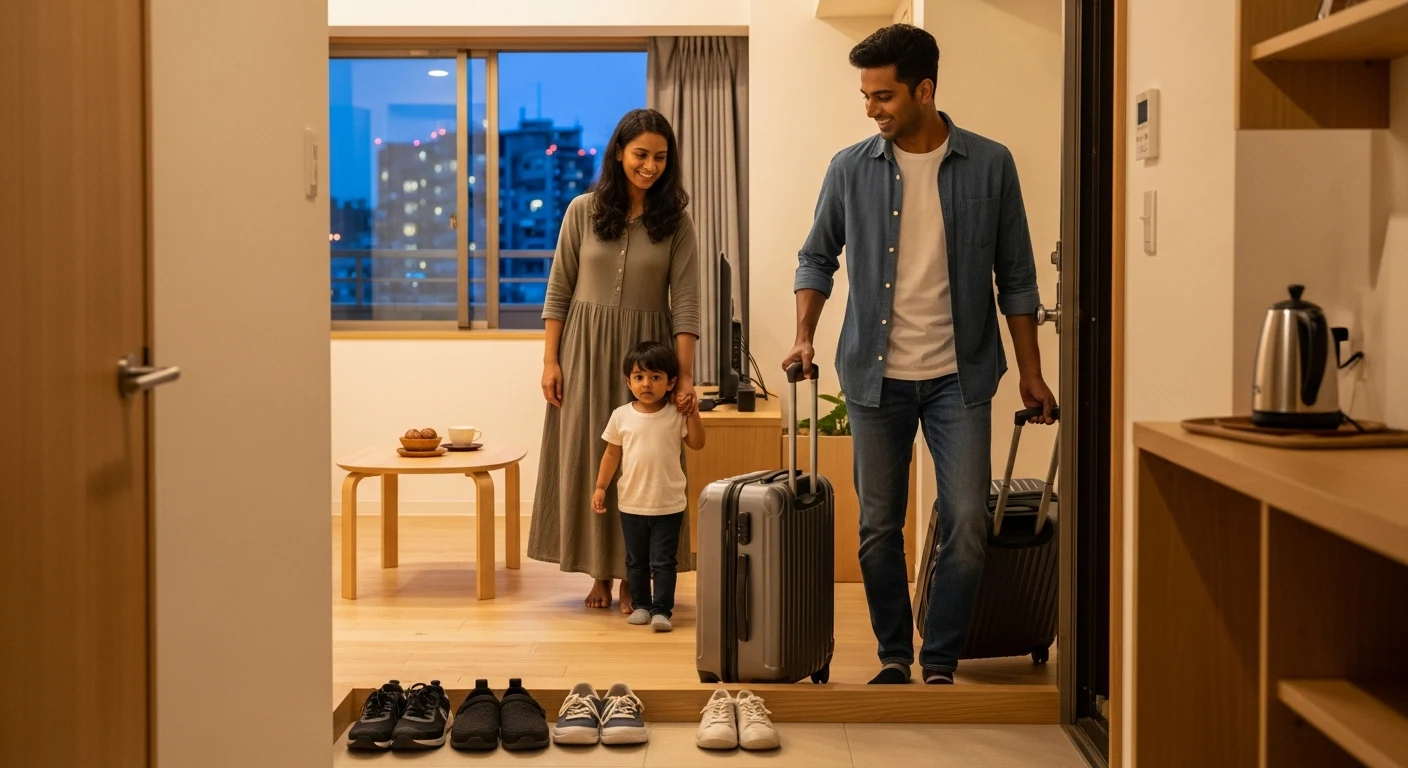
You are almost there. Your file is clean, and your dates are shaping up. Now make sure your flight plan supports your Japanese digital nomad visa instead of creating last-minute friction at the counter or at the gate. For airline or embassy checks, book a dummy ticket and show a live, verifiable PNR instantly. 👉 Order your dummy ticket today to stay ahead.
Why Japan Asks For Onward/Return Evidence
Japan links travel plans to your status and period of stay. Officers want to see that your itinerary lines up with your visa category and the stay you requested. This is standard across eligible countries and helps prevent accidental overstays. It also reassures airlines at passport control that you will exit on time. For remote workers, proof of exit shows your planned activities are genuine and not a back door into a local job. Treat this like part of the application process rather than an afterthought.
You still carry the same mindset on arrival. When you enter Japan, the airline and border staff may ask how and when you plan to leave. Have the details ready and consistent with your forms. This scrutiny is particularly stringent at major hubs like Narita, where high volumes lead to thorough spot-checks.
Accepted Formats That Typically Work
You can show exit intent in a few practical ways:
-
A round-trip booking that returns within your permitted stay
-
A flexible return that you can date-shift once your accommodation and meetings settle
-
A separate onward leg to a nearby hub, such as South Korea or Singapore
-
A reservation that can be reissued once your schedule in Japan firms up
Keep the itinerary readable. Include your full name as on your valid passport, and make sure the dates complement your health insurance coverage. Do not mix formats. If you choose a separate onward leg, keep the inbound and outbound in the same folder so an officer sees the whole story at one glance. Digital formats like PDFs are increasingly accepted, but always have a printed backup for VFS submissions.
Matching Flight Dates To Visa Validity And Stay Length
Two clocks control your timing. The first is the visa’s entry window and the initial visa's expiration date printed on the sticker. The second is the period of stay you receive upon landing. Your flights should let you arrive inside the entry window and depart inside the stay limit.
If your local Japanese embassy or Japanese consulate issues a single-entry sticker, avoid side trips that would require re-entry. If you must leave and re-enter, confirm your permission before you book. Build buffers around weekends and public holidays in major cities so you are not hunting for changes on closed days. For example, avoiding bookings around Obon Festival ensures smoother adjustments.
Timing Your Booking: Before Or After Approval?
There are two safe playbooks:
-
Before approval: Use changeable or refundable options, or a time-boxed reservation that you can tweak if the decision date moves. This suits digital nomad visa application timelines where appointments slide.
-
After approval: Lock solid dates that align with your planned activities and accommodation start. This protects you from a mismatch between the visa-free entry assumptions some travelers make and the specifics of a Japan remote work visa.
Either way, keep a checklist. Passport details. Names that match the completed visa application form. Insurance dates. Accommodation confirmations. If anything shifts, update the itinerary so all the documents tell one story. Pre-approval bookings via dummy options are especially useful for Indian applicants facing VFS delays.
Align Flights With Insurance And Accommodation
Your private health insurance must span your physical days in Japan. Insurers often let you adjust the start date once your appointment moves. Set your inbound flight on or after the policy start, and your outbound on or before the policy end. If you are arranging long-term accommodation, sync your check-in and check-out with your flights. The same logic applies if a business partner or client meeting anchors your calendar. Keep confirmations handy in case an officer asks during the visa application process.
If you travel for medical treatment, confirm that your policy includes Japan and that your itinerary does not exceed the stay you requested. Simple alignment reduces questions at the counter. For extended stays, consider layered policies that cover pre-arrival transit risks as well.
India-Specific Operational Tips At The Airport
At check-in, staff may ask for onward proof even if other countries did not. Have printed itineraries and your necessary documents in one sleeve: reservation, accommodation proof, policy letter, and the visa application form copy. If asked about work, keep it simple. You work for foreign companies, you will not take a local working visa, and your stay fits the sticker.
Save a local transit plan for arrival day. Book Wi-Fi, map your route from the airport, and know where your immigration office visit will be if you need any follow-up for a residence card. If a language barrier worries you, keep key Japanese phrases and your address printed. Small steps like these keep the line moving. At Delhi or Mumbai airports, eSIM options from Airalo can provide instant connectivity upon landing.
Where A Verifiable Reservation Helps
Sometimes an airline wants to see a live booking record during the application process or at boarding. In those moments, a short-term, verifiable reservation does the job without forcing you into a non-refundable fare.
Reliable dummy ticket providers book you with major airlines like Japan Airlines, ANA, or Singapore Airlines. If you prefer a single place to source it, BookForVisa.com issues a reservation with a live PNR for ₹1,300 (≈$15) that you can date-shift to match appointment moves. Use it to keep documents required tidy while you finalise plans. This service has helped thousands of Indian nomads align their proofs seamlessly.
Extra Checks Many Digital Nomads Forget
Make sure your valid passport has enough blank pages and a comfortable runway beyond your stay. If your bank account name format differs from your ticket, fix it in your traveler profile. Bring an employment contract or income certificate only if the officer asks, but keep scans ready since some missions like to verify the minimum income requirement in context. If you hold a status like a highly skilled professional visa, an intra-company transferee visa, or a business manager visa, follow those rules instead. This section targets non-working visa applicants who are shaping trips around flexible projects, co-working spaces, and meetings across a foreign country.
If you plan to apply for permanent residency one day, keep clean records of entries and exits. Track days to avoid confusion around double taxation agreements or Japanese income tax. When in doubt, get neutral guidance from an immigration lawyer who knows how foreign affairs policies translate at the counter.
Finally, keep your folder human. Title it with your name and date. Put all the documents in the order an officer will read them: necessary documents first, then flight proof, then accommodation, then insurance. Smooth files get faster decisions and fewer questions. Digital nomads often overlook the need for apostille on non-English documents—factor this into your timeline for Indian-issued proofs.
Make Flights Work For You: Flexible, Safe, And Aligned With Real Life
You have the rules and the route. Now turn flights into a planning tool that protects your time, money, and momentum. Think flexible where it matters and firm where it counts. Avoid nonrefundable risks and switch plans easily with a smart dummy ticket booking. This strategy is particularly vital for nomads balancing client deadlines with visa uncertainties.
Build A Flex-First Flight Strategy
Start with the inbound. Pick a fare that allows date changes at a reasonable cost. Pair it with an outbound that you can move once your housing and work rhythm settle. This balances certainty with room to adjust.
If you expect shifting sprint dates or client sign-offs, choose airline-direct over aggregator deals for easier changes. Track the change fee and the reissue process up front. Put both in your notes so surprises do not hit you at checkout. Tools like Google Flights' calendar view can help spot flexible windows early.
Know Your Change Rules Before You Pay
Every ticket has conditions. Read them once, slowly. Look for three controls:
-
Change fee and how it is charged.
-
Fare difference rules if the new date is pricier.
-
No-show penalties if you miss a segment.
If the rules are unclear, take screenshots while the fare rules are on screen. Save them with your itinerary. You can show this at a counter if needed. One small habit. Big time saver. For long-haul routes from India, airlines like Emirates often offer more lenient policies for premium economy changes.
Protect Yourself With Short Holds And Soft Locks
Many airlines and travel agencies offer 12 to 48-hour holds. Use them when you are waiting on an appointment email or a landlord response. You freeze the fare while your paperwork catches up.
If holds are not available, create a soft lock. Book a changeable fare with a return date inside your planned stay. Mark your calendar to revisit it after your approval. You will be inside policy and still free to move. Dummy reservations extend this hold virtually indefinitely without fare locks.
Make Your Flight Calendar Match Real Life
Flights are not just dates. They touch everything else. Line them up with your week.
-
Land two or three days before your first heavy work deliverable.
-
Avoid late Sunday landings if Monday brings meetings.
-
Block a half day to set up SIM, Wi-Fi, and workspace before you dive in.
Create a one-page arrival plan. Airport to lodging. First grocery run. Backup route if there is a delay. It keeps the first 48 hours calm and productive. Integrate tools like Notion for a shared calendar that syncs with team members across zones.
Balance Airline Choices With Practical Routing
Nonstops to Tokyo or Osaka remove stress, but one-stop routings can be cheaper. If you connect, keep a comfortable layover window. Chasing tight connections looks efficient until a small delay breaks your plan.
If you are testing different routings, compare the arrival time, airport, and commute. Haneda can be easier for central Tokyo. Kansai is smoother for Kyoto or Kobe. Pick the airport that reduces your first-day fatigue, even if the fare is slightly higher. From India, Qatar Airways via Doha often balances cost and convenience.
Fit Accommodation And Flights Like Puzzle Pieces
Book accommodation with a cancellation window that reaches at least a few days past your intended entry. This gives you breathing space if the appointment moves.
Sync check-in and check-out with flights. Red-eye arrivals can make early check-in worthwhile. If the hotel charges for early check-in, plan a luggage drop and a nearby café with reliable Wi-Fi. Add both to your arrival plan so you do not scramble. Platforms like Airbnb offer flexible nomad-friendly stays in Shibuya or Roppongi.
Use Insurance Dates As Guardrails
Set your policy to start on or before your inbound flight. End it on or after your outbound. If the appointment slides, move the policy dates first, then flights, then lodging. This sequence reduces gaps and keeps your documents aligned if anyone checks.
Store your policy certificate and itinerary in a single PDF. Officers and airline staff appreciate clean bundles. You get faster conversations. Annual policies with monthly adjustments are ideal for variable nomad schedules.
Keep Work Rhythm Intact While You Travel
Tell your clients or employer about your travel block in advance. Offer coverage plans for deadlines that fall near your flight days. Share a fallback number and a quiet time window for the first two days in case jet lag hits harder than expected.
If you are a freelancer, pre-schedule deliverables that do not need your live attention. Auto-invoices and prepared handovers turn your travel days into routine days for your clients. VPN setups for secure access during layovers ensure uninterrupted productivity.
Budget For Reality, Not Hope
Fares move. Assume they will rise around holidays and school breaks. Watch typical spikes around New Year, Golden Week, and summer peaks. If you must travel, then lock earlier or buffer extra funds for a fare difference later.
Set a small contingency fund for last-minute changes. It reduces stress and prevents bad choices when you are under time pressure. For Indian travelers, factoring in INR volatility against JPY can prevent budget overruns.
Plan Safe Exit Options Early
Even if you plan to stay the full period, sketch three exit choices. An earlier date if a project ends. Your original date. A later date within your permitted stay if something shifts forward. With three pre-checked options, you can change fast without redoing all your research.
Keep an eye on seat availability for your preferred homebound route. If you see it tightening, move quickly. Availability pain is worse than a small fare difference. Southeast Asia onward legs via budget carriers like AirAsia add affordable buffers.
Pack Documents For The Travel Day
Print your approval notice, flight itinerary, insurance certificate, and lodging confirmation. Keep digital copies in a dedicated folder on your phone with offline access. Label files clearly with your name and date so you can open the right one in seconds.
At check-in, answer questions simply. You are entering for remote work conducted for overseas clients or an employer abroad. Your exit is booked within your permitted stay. Your insurance covers the full period. Short, clear answers keep the line moving.
Choose a changeable inbound and an outbound that you can move. Read the fare rules once and save them. Align flights with insurance and lodging. Land with a small arrival plan and a realistic work buffer. Save pre-checked exit options. Keep documents tidy and ready.
Do this and your flights become the strongest part of your plan. They will support your application, not complicate it, and they will make your first week in Japan smooth and productive. Remember, a well-aligned itinerary not only passes checks but also sets a positive tone for your nomad chapter.
Japan Digital Nomad Visa: From Eligibility To First Week In Japan
You’re set. First, confirm eligibility and build a neat, consistent file: income proof, insurance, accommodation, and a clean activity plan. Book your VFS slot, submit calmly, and wait for the decision before locking non-refundable flights.
After approval, match the entry within visa validity and plan your exit within the permitted stay. Align flight dates with insurance and lodging, keep printouts handy, and land with a simple arrival plan for Wi-Fi, transit, and check-in. Remember the guardrails: remote work for overseas clients only, no local employment, and zero tolerance for overstays.
Follow any local registration steps as instructed, track deadlines, and set reminders. Do this, and your Japan stay starts smoothly and stays stress-free. On a tight timeline, book a dummy ticket now and finalize your itinerary after approval. Upon arrival, prioritize registering your address within 14 days at the local ward office to unlock banking and mobile services seamlessly.
The Role of a Dummy Ticket in Your Application
A dummy ticket serves as a temporary, verifiable flight reservation that demonstrates onward travel intent without the financial risk of a full booking. Ideal for Japan Digital Nomad Visa applicants, it includes a real PNR from major airlines, ensuring embassy and airline acceptance. Unlike static PDFs, a dummy ticket allows unlimited date changes, aligning perfectly with shifting VFS appointments or approval timelines.
For Indian professionals, this tool bridges the gap between document deadlines and real bookings. Priced affordably at around ₹1,300, it's issued instantly via platforms like DummyFlights.com, complete with e-ticket and itinerary. Officers verify it live, just like a paid ticket, reducing rejection risks from mismatched proofs. Integrate it early: Use for initial submissions, then transition to actual flights post-approval for a frictionless process.
Benefits extend beyond visas—nomads use dummy tickets for Schengen extensions or U.S. ESTA proofs too. Always pair with insurance and accommodation docs for a cohesive story. In essence, it's your safety net, turning uncertainty into structured progress toward that Tokyo workspace.
Frequently Asked Questions
To further support your journey, here are answers to common queries on Japan Digital Nomad Visas and flight proofs:
What if my VFS appointment changes after submitting flight proofs?
Opt for a dummy ticket with flexible reissuance. Providers like DummyFlights allow date shifts in minutes, keeping your file current without resubmission hassles.
Can I use a one-way ticket for the Digital Nomad Visa?
No—embassies require onward proof. A dummy round-trip or onward reservation satisfies this, verifiable via PNR, ensuring compliance without commitment.
How soon after approval should I book real flights?
Within the three-month entry validity. Book changeables initially to buffer any post-approval adjustments, aligning with your six-month stay.
Does the dummy ticket need to match exact dates?
Approximate is fine for submissions, but update to precise post-approval. Ensure it fits within stay limits and insurance coverage for coherence.
Are dummy tickets accepted at Japanese airports?
Yes, if PNR-verifiable. Airlines like ANA treat them as valid holds during check-in, provided your visa is approved and docs align.
What Travelers Are Saying
Why Travelers Trust BookForVisa.com
BookForVisa.com has been helping travelers since 2019, specializing exclusively in dummy ticket reservations for visa applications. We've supported over 50,000 visa applicants with secure, instant PDF deliveries and 24/7 customer support from our dedicated team. As a registered business, BookForVisa.com ensures verifiable PNRs from major airlines, niche expertise in flexible travel proofs, and compliance-focused guidance that reinforces your application's strength.


